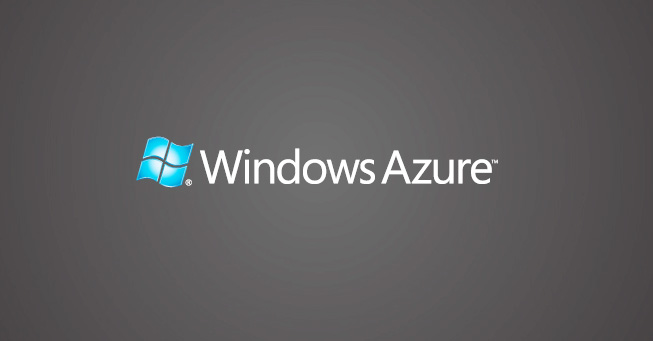With Windows Server 2003 ending support in July 2015, businesses that still use Windows Server 2003 are looking for new options. The most obvious choice is to replicate the type of system you have now (especially if you have a premises-based solution) and to use either Windows Server 2008 or Windows Server 2012. Even if you choose one of those options to upgrade to this year, you may want to consider complementing a premises-based solution with a cloud-based server solution: Azure.
Microsoft Azure offers some key benefits to consider. Without additional capital expenditures, you can have the IT capacity you need when you need it. Your costs move to a predictable and steady (and likely lower cost) operational expenses model instead of a relatively unstable capital expenses model. But the key benefit to using Azure is scalability, which is great for businesses that may outgrow their premises-based server.
Premises-Based Server Solutions
Windows Server 2003 has provided IT with an amazing operating system for the past 10 years, but IT has changed a lot since then. The industry is moving forward and so has the operating system. It’s important to understand the pros and cons of each solution, and why they may work best together as complementary solutions.
Windows Server 2012 R2 offers storage benefits such as virtualization of storage with commodity storage disks and the tiering of that storage. It also includes the ability to apply hybrid cloud architectures to storage. While overall storage costs continuously increase, the majority of storage needs is for tier 2 or tier 3 lower-priority data, with most of it infrequently accessed.
Advantages of Cloud-Based Server Solutions
Today, every area of business depends on technology. As a result, the need for IT resources is growing steadily. The move to cloud computing reflects the trend; as business requirements grow, a flexible option for keeping up with that growth is cloud capacity. We are seeing trends that reflect the growth of cloud—the question is: how can IT build a cloud strategy that makes sense? And just as important, how can IT continue to take advantage of the strengths of today’s data center while evolving to a new hybrid cloud model?
- 71 percent of companies saw rising demand for IT projects in 2013
- To keep costs down and to make it possible for IT to respond to this rising demand, International Data Corporation (IDC) predicts that:
- By 2016, 70 percent of CIOs will embrace a “cloud first” strategy
- By 2020, Forrester predicts that 45 percent of total IT spending will be cloud-related
Knowing this, cloud-based solutions are something to consider. Cloud-based solutions allow you to:
- Build new applications or websites that require global scale
- Scale infrastructure at a moment’s notice to meet the most demanding business requirements
- Reduce storage, backup, and recover costs
Using Azure as a Hybrid Model
With systems like Azure, you get a consistent experience across datacenter and cloud deployments so that you can use existing skills to take advantage of the new hybrid model. With more hybrid cloud options available, you can take advantage of Microsoft Azure Infrastructure Services using the same virtual machine format as Windows Server.
Once you have pooled resources or a private cloud in place in your own data center, you can take the next step and expand—connecting to Microsoft Azure or a service provider cloud. This gives you tons of resources to draw on as needed. The main question you need to consider is where and when to leverage public cloud resources. Think about workload mobility, workloads with unpredictable demand, or where you could reduce costs with cloud resources.
When to Use Azure
Microsoft Azure offers an ideal platform to extend your own datacenter capacity. You can easily access Azure resources when it makes the most sense for your business. And you get consistency across clouds so that you’re not adding a lot of complexity to the process.
When you use this hybrid cloud storage solution, you have:
- Consolidation of storage infrastructure sprawl through a simple combination of StorSimple systems on-premises and Microsoft Azure storage services
- Storage TCO reduction of 60 to 80 percent (on average)
- Faster data protection and disaster recovery with automated cloud snapshots for data backup and disaster recovery via the pulling of data from the cloud only as needed, resulting in much faster than traditional data restore (hours vs. days/weeks)
Because of these diverse features, workloads that fit this data usage pattern can have their primary storage, backup, and disaster recovery needs met by one cost-effective solution that reduces the complexity of multi-product, multi-vendor solutions while meeting a wide range of storage needs.
Concerns With Using Hybrid Cloud Models
The main concern we hear from organizations about hybrid cloud storage is that it will increase cost or create complexity, or both. And it’s certainly true that extending outside the walls of your data center brings new challenges. The hybrid cloud model works best for businesses that can utilize those new tools or that may outgrow their current server solutions; it is also appropriate for IT people with the bandwidth to learn a new system.
Using Azure isn’t for everybody, but for the many businesses that are looking for a more contemporary server solution, now is a great time to explore those options. If you’re upgrading servers in anticipation for the end of Windows Server 2003 support in July 2015, it’s worth looking into cloud-first models or cloud-hybrid models that can support a server solution that’s in your comfort zone while still offering a lot of great benefits.

